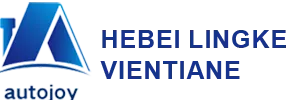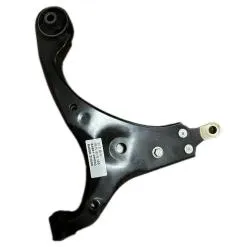
-
 Afrikaans
Afrikaans -
 Albanian
Albanian -
 Amharic
Amharic -
 Arabic
Arabic -
 Armenian
Armenian -
 Azerbaijani
Azerbaijani -
 Basque
Basque -
 Belarusian
Belarusian -
 Bengali
Bengali -
 Bosnian
Bosnian -
 Bulgarian
Bulgarian -
 Catalan
Catalan -
 Cebuano
Cebuano -
 Corsican
Corsican -
 Croatian
Croatian -
 Czech
Czech -
 Danish
Danish -
 Dutch
Dutch -
 English
English -
 Esperanto
Esperanto -
 Estonian
Estonian -
 Finnish
Finnish -
 French
French -
 Frisian
Frisian -
 Galician
Galician -
 Georgian
Georgian -
 German
German -
 Greek
Greek -
 Gujarati
Gujarati -
 Haitian Creole
Haitian Creole -
 hausa
hausa -
 hawaiian
hawaiian -
 Hebrew
Hebrew -
 Hindi
Hindi -
 Miao
Miao -
 Hungarian
Hungarian -
 Icelandic
Icelandic -
 igbo
igbo -
 Indonesian
Indonesian -
 irish
irish -
 Italian
Italian -
 Japanese
Japanese -
 Javanese
Javanese -
 Kannada
Kannada -
 kazakh
kazakh -
 Khmer
Khmer -
 Rwandese
Rwandese -
 Korean
Korean -
 Kurdish
Kurdish -
 Kyrgyz
Kyrgyz -
 Lao
Lao -
 Latin
Latin -
 Latvian
Latvian -
 Lithuanian
Lithuanian -
 Luxembourgish
Luxembourgish -
 Macedonian
Macedonian -
 Malgashi
Malgashi -
 Malay
Malay -
 Malayalam
Malayalam -
 Maltese
Maltese -
 Maori
Maori -
 Marathi
Marathi -
 Mongolian
Mongolian -
 Myanmar
Myanmar -
 Nepali
Nepali -
 Norwegian
Norwegian -
 Norwegian
Norwegian -
 Occitan
Occitan -
 Pashto
Pashto -
 Persian
Persian -
 Polish
Polish -
 Portuguese
Portuguese -
 Punjabi
Punjabi -
 Romanian
Romanian -
 Russian
Russian -
 Samoan
Samoan -
 Scottish Gaelic
Scottish Gaelic -
 Serbian
Serbian -
 Sesotho
Sesotho -
 Shona
Shona -
 Sindhi
Sindhi -
 Sinhala
Sinhala -
 Slovak
Slovak -
 Slovenian
Slovenian -
 Somali
Somali -
 Spanish
Spanish -
 Sundanese
Sundanese -
 Swahili
Swahili -
 Swedish
Swedish -
 Tagalog
Tagalog -
 Tajik
Tajik -
 Tamil
Tamil -
 Tatar
Tatar -
 Telugu
Telugu -
 Thai
Thai -
 Turkish
Turkish -
 Turkmen
Turkmen -
 Ukrainian
Ukrainian -
 Urdu
Urdu -
 Uighur
Uighur -
 Uzbek
Uzbek -
 Vietnamese
Vietnamese -
 Welsh
Welsh -
 Bantu
Bantu -
 Yiddish
Yiddish -
 Yoruba
Yoruba -
 Zulu
Zulu
High-Performance Upper Control Arm for Enhanced Stability
Product: Control Arm

1. Industry Overview and Trends: Upper Control Arm Market Highlights
The upper control arm (often referred to as the Control Arm) is essential in both independent and multi-link suspension systems, directly affecting vehicle ride, handling, and safety. As mobility transitions to electrification, ADAS, and lightweighting, demand for performance control arms with higher stiffness, corrosion resistance, and longevity has surged.
- According to Grand View Research, the global automotive suspension market was valued at $53.6B in 2023 and is projected to grow at 4.5% CAGR, with the upper control arm segment showing strong OEM and aftermarket uptick.
- OEM integration of option upper control arm upgrades in SUVs & heavy-duty trucks is forecasted to increase by 18% from 2024 to 2028.
- Adoption in non-automotive sectors (mining, petrochemical, water treatment) is rising due to material innovations (e.g., 7075-T6 aluminum alloy, stainless steel) and modular design.
2. Core Technical Parameters: Upper Control Arm vs. Control Arm Types
Upper control arms serve as the primary link connecting the wheel hub to the vehicle frame, controlling camber, caster, and suspension travel. Modern new control arms are engineered for reduced weight without sacrificing durability. Below is a concise parameter table covering mainstream products and performance control arms:
| Parameter | Upper Control Arm | Outer Control Arm | Performance Control Arms | Option Upper Control Arm |
|---|---|---|---|---|
| Material | Aluminum Alloy 6061/7075, Forged Steel | Cast Steel, Mild Steel, Ductile Iron | Carbon Steel, 7075-T6, Titanium | Composite/Hybrid (Al+Polymer) |
| Yield Strength (MPa) | 295-505 | 250-385 | 420-930 | 320-700 |
| Weight (kg, avg.) | 1.1 – 2.8 | 2.0 – 3.6 | 0.95 – 2.2 | 1.05 – 2.3 |
| Corrosion Resistance | ISO 9227 ≥ 720h | ISO 9227 ≥ 480h | ISO 9227 ≥ 1000h | ISO 9227 ≥ 800h |
| Endurance/Usage Life (km) | 150,000 – 320,000 | 90,000 – 180,000 | 220,000 – 450,000 | 170,000 – 350,000 |
| Compliance Standard | ISO 9001, IATF 16949 | ISO 9001 | ISO 9001, TS16949, ANSI/SAE J492 | ISO, Optional: ANSI/SAE |
3. Upper Control Arm Manufacturing: Process Flow & Quality Excellence
- Raw Material: High-stress Forged 7075/6061-T6 aluminum or 42CrMo forged steel (certified to ISO 4957, ASTM A29).
- Forging/Casting: Hot forging at 500–540°C or investment casting for tight-tolerance geometry; followed by shot-peening to relieve stress.
- CNC Machining: Multi-axis CNC ensures precise ball joint seat and bushing bores as per ANSI/ASME B46.1 geometric tolerances.
- Heat Treatment: Solution treatment + artificial aging, hardness up to HRC 27–32 for steel, Brinell 154–178 for aluminum.
- Surface Coating: E-coat, Zn-Ni plating, epoxy polymer; verified by ISO 9227 salt spray test (min. 720h corrosion resistance).
- Precision Inspection: 100% CMM dimensional check, ultrasonic flaw detection per ASTM E2375, tensile and fatigue life test.
4. Material, Lifespan & Application Sectors
Upper control arms are manufactured from advanced materials chosen for optimal strength-to-weight, fatigue resistance, and corrosion performance:
- Aluminum 7075-T6 – Ideal for high-performance and lightweight vehicles, delivers yield strength >505MPa, 42% lighter than traditional cast iron arms.
- 42CrMo Forged Steel – Used in commercial vehicles, offroad equipment, and harsh industrial environments.
- Composite/Hybrid Arms – For option upper control arm, using polymer overlays for enhanced corrosion and vibration absorption.
- Premium performance control arms: 350,000+ km (per fatigue test, ISO 16750-3)
- OE standard upper control arm: 200,000–280,000 km
- New control arm aftermarket upgrades: 170,000–240,000 km
Key Sectors:
Heavy-duty, petrochemical (resistant to hydrocarbon exposure and corrosion), metallurgical plants, water treatment, mining, precision agriculture vehicles, and advanced commercial vehicles.
For standards, see SAE J949 & ISO 9001.
5. Competitive Comparison: Leading Manufacturers & Solutions
| Manufacturer | Product | Main Material | Weight (kg) | Corrosion Test (ISO 9227) | Warranty (years) | Certifications | Custom Options |
|---|---|---|---|---|---|---|---|
| LK Control Arm | Upper Control Arm | 7075-T6 Aluminum / Forged Steel | 1.1–2.3 | ≥720h | 5 | ISO 9001, IATF 16949 | Tune length, geometry, color |
| MOOG | R-Series Control Arm | Cast Steel, Iron | 2.0–3.5 | 480h | 3 | ISO 9001 | No |
| Delphi | OE Spec Upper Arm | Aluminum Alloy | 1.3–2.8 | 600h | 4 | ISO 9001 | Yes – limited |
| Mevotech | Performance Control Arm | 7075 Aluminum/Cast Steel | 1.0–2.5 | 720h | 5 | ISO 9001, TS16949 | Custom colors |
6. Tailored Engineering: Custom Upper Control Arm Solutions
- Custom tuning of camber/caster angles for motorsport applications.
- Specific coatings for harsh chemical/industrial exposure (e.g., Zn-Ni, high-build epoxy up to 350µm, per ISO 12944).
- Fatigue-critical applications: Selection of premium bushings, heavy-duty ball joints (documented ISO 16750-3 test results available).
- Length/geometry adjustable variants for offroad, lifted trucks, or axle articulation.
✓ Full CAD/CAE engineering support
✓ Prototyping, CMM validation reports
✓ Aftermarket branding, laser etching
✓ MOQ: 50pcs. Delivery: 4–6 weeks
7. Real-World Application Case Studies
- Application: Heavy-duty dump truck suspension retrofits.
- Solution: Upgraded to upper control arm with 7075-T6, 28% weight saving.
- Results: Reduced maintenance intervals, +31% lifespan, field feedback cited decreased vibration.
- Client: Multinational refinery (Saudi Arabia).
- Upgrade: Corrosion-proof performance control arms (double-layer Zn-Ni coating).
- Result: 3-year corrosion-free operation, zero failure incidents, confirmed via ASTM B117 test.
- Challenge: High load at cambers >3° in aggressive track settings.
- Solution: Option upper control arm with adjustable geometry, solid bushing.
- Feedback: Improved tire wear profile, superior steering feel, data-logged by engineering team.
8. FAQs: Upper Control Arm Professional FAQ
9. Delivery Times, Warranty & Global Support
- Lead time: Standard SKUs: 3–5 weeks | Custom spec: 4–6 weeks (including FEA, CAD, and validation).
- Warranty: Up to 5 years (or 320,000 km), covering fatigue, corrosion, geometry failures. Claim rate <0.27% (2021–2023 data).
- Support: 24/7 technical hotline, 48h defective return policy, global logistics support. Documentation supplied per ISO/TS/SAE requirements.
10. References & Further Reading
-

 English
English
 Afrikaans
Afrikaans
 Albanian
Albanian
 Amharic
Amharic
 Arabic
Arabic
 Armenian
Armenian
 Azerbaijani
Azerbaijani
 Basque
Basque
 Belarusian
Belarusian
 Bengali
Bengali
 Bosnian
Bosnian
 Bulgarian
Bulgarian
 Catalan
Catalan
 Cebuano
Cebuano
 Corsican
Corsican
 Croatian
Croatian
 Czech
Czech
 Danish
Danish
 Dutch
Dutch
 Esperanto
Esperanto
 Estonian
Estonian
 Finnish
Finnish
 French
French
 Frisian
Frisian
 Galician
Galician
 Georgian
Georgian
 German
German
 Greek
Greek
 Gujarati
Gujarati
 Haitian Creole
Haitian Creole
 Hausa
Hausa
 Hawaiian
Hawaiian
 Hebrew
Hebrew
 Hindi
Hindi
 Miao
Miao
 Hungarian
Hungarian
 Icelandic
Icelandic
 Igbo
Igbo
 Indonesian
Indonesian
 Irish
Irish
 Italian
Italian
 Japanese
Japanese
 Javanese
Javanese
 Kannada
Kannada
 Kazakh
Kazakh
 Khmer
Khmer
 Rwandese
Rwandese
 Korean
Korean
 Kurdish
Kurdish
 Kyrgyz
Kyrgyz
 Lao
Lao
 Latin
Latin
 Latvian
Latvian
 Lithuanian
Lithuanian
 Luxembourgish
Luxembourgish
 Macedonian
Macedonian
 Malgashi
Malgashi
 Malay
Malay
 Malayalam
Malayalam
 Maltese
Maltese
 Maori
Maori
 Marathi
Marathi
 Mongolian
Mongolian
 Myanmar
Myanmar
 Nepali
Nepali
 Norwegian
Norwegian
 Norwegian
Norwegian
 Occitan
Occitan
 Pashto
Pashto
 Persian
Persian
 Polish
Polish
 Portuguese
Portuguese
 Punjabi
Punjabi
 Russian
Russian
 Samoan
Samoan
 Scottish Gaelic
Scottish Gaelic
 Serbian
Serbian
 Sesotho
Sesotho
 Shona
Shona
 Sindhi
Sindhi
 Sinhala
Sinhala
 Slovak
Slovak
 Slovenian
Slovenian
 Somali
Somali
 Spanish
Spanish
 Sundanese
Sundanese
 Swahili
Swahili
 Swedish
Swedish
 Tagalog
Tagalog
 Tajik
Tajik
 Tamil
Tamil
 Tatar
Tatar
 Telugu
Telugu
 Thai
Thai
 Turkish
Turkish
 Turkmen
Turkmen
 Ukrainian
Ukrainian
 Urdu
Urdu
 Uighur
Uighur
 Uzbek
Uzbek
 Vietnamese
Vietnamese
 Welsh
Welsh
 Bantu
Bantu
 Yiddish
Yiddish
 Yoruba
Yoruba
 Zulu
Zulu
 Romanian
Romanian






